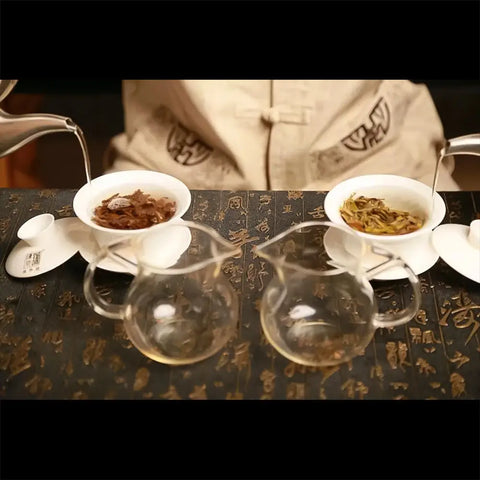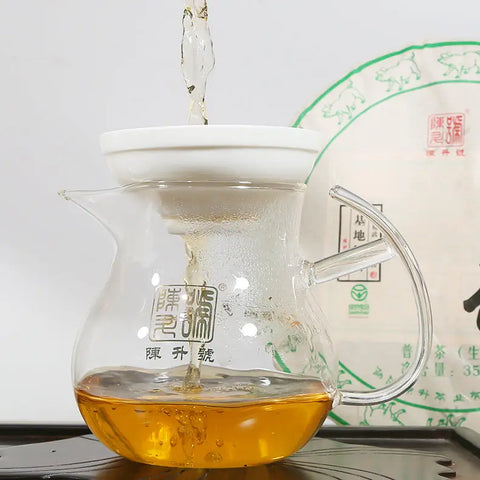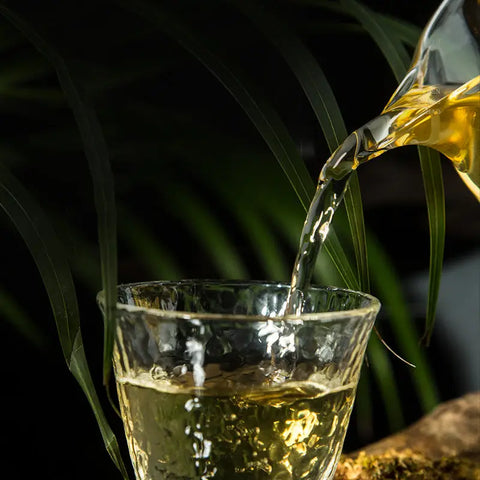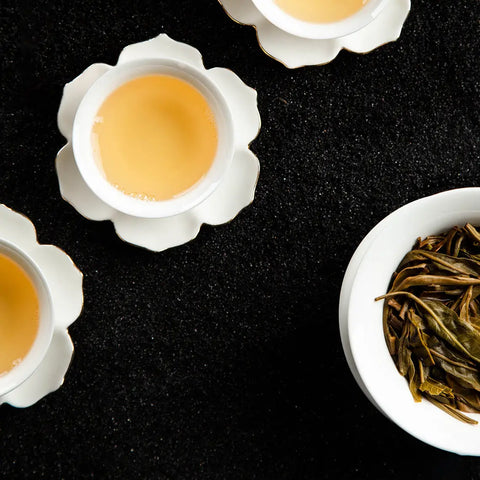How Long to Steep Herbal Tea
When steeping herbal tea, the right techniques can enhance flavor and extract beneficial compounds. Key aspects include defining what constitutes herbal tea and identifying the benefits of proper steeping.
Defining Herbal Tea
Herbal tea, also known as tisane, is made from dried fruits, flowers, spices, or herbs. Unlike traditional teas, it contains no caffeine. Common types include chamomile, peppermint, and rooibos.
Different ingredients require specific steeping times and temperatures for optimal flavor and benefits.
Bestsellers
For instance:
- Chamomile: Steep for 5-7 minutes at 200°F (93°C).
- Peppermint: Steep for 7-12 minutes at 212°F (100°C).
- Rooibos: Steep for 5-8 minutes at 212°F (100°C).
Benefits of Proper Steeping
Proper steeping not only enhances the tea's flavor but also ensures maximum extraction of beneficial compounds. Herbal teas are known for their therapeutic properties, such as relaxation, digestion, and antioxidant effects.
For example, chamomile may aid in relaxation due to its apigenin content. Peppermint can soothe digestion, while rooibos provides antioxidants that support overall health.
Incorrect steeping can lead to a weak or bitter brew, reducing the tea's health benefits and enjoyment. Using the right steeping method ensures you get the full spectrum of flavors and health benefits from your herbal tea.
Preparing for Steeping

Preparing herbal tea involves selecting quality water, accurately measuring your tea, and selecting appropriate steepware for the best flavor extraction.
Selecting the Right Water
Use fresh, clean water to enhance the taste of your herbal tea. Tap water with high chlorine content can alter the tea's flavor. Opt for filtered or spring water instead. The mineral content in spring water can complement the tea’s natural oils, providing a richer taste.
Avoid distilled water, as it lacks minerals that enhance the tea's flavor profile. Heat the water to the specific temperature recommended for your chosen herbal blend, usually between 180°F-210°F.
Measuring Herbal Tea
Correct measurement of herbal tea ensures consistent flavor. Most herbal teas require 1-2 teaspoons of loose herbs per cup of water. Use a measuring spoon for accuracy. For stronger flavors, you can slightly increase the amount, but avoid overcrowding the infuser to allow water to circulate.
If using tea bags, typically one bag per 8-ounce cup suffices. Adjust quantities based on the herb's strength and desired potency.
Choosing Appropriate Steepware
Select steepware that allows ample room for the herbs to expand. This can include infusers, tea balls, or teapots with built-in strainers. Infusers with fine mesh are ideal for preventing small herb particles from escaping into the cup.
For large batches, use a teapot with a spacious infuser basket. Ensure steepware materials, like stainless steel or BPA-free plastics, are safe and do not impart unwanted flavors.
Lao Ban Zhang
Steeping Techniques
Choosing the right steeping technique for your herbal tea can significantly impact its flavor and health benefits. Understanding both the hot water infusion and cold brew methods allows you to decide the best approach for your preferences.
Hot Water Infusion
Hot water infusion is the most common method for steeping herbal tea. Start by boiling water, then allow it to cool slightly. The ideal temperature for most herbal teas is between 190°F to 205°F (88°C to 96°C).
Use 1-2 teaspoons of dried herbs or 2-4 teaspoons of fresh herbs per cup. Pour the hot water over the herbs and cover the vessel to trap the essential oils and aromas.
Steep for 5 to 15 minutes, depending on the type of herbs. For lighter herbs like chamomile, 5 minutes is sufficient, while stronger, woody herbs like rosemary may require up to 15 minutes. Strain the herbs before drinking.
Cold Brew Method
The cold brew method requires more time but delivers a smooth and less bitter taste. Use 1-2 teaspoons of dried herbs or 2-4 teaspoons of fresh herbs per cup of cold water.
Combine the herbs and water in a jar or carafe, then place it in the refrigerator. Let it steep for 6 to 12 hours. This slow extraction process helps preserve delicate flavors and nutrients.
Once the steeping time is over, strain the herbs and serve the tea over ice or as is. Cold brew herbal tea can be stored in the refrigerator for up to 2 days.
Timing Your Steep

The steeping time for herbal tea varies depending on the type of herbs used and your personal taste preferences. Here are some guidelines to help you achieve the perfect cup.
General Guidelines
For most herbal teas, a steeping time of 5 to 7 minutes is typically ideal. This range allows the herbs to release their flavors without becoming overly bitter. Chamomile, peppermint, and ginger teas generally fall within this time frame.
Some herbs, such as rooibos and hibiscus, benefit from longer steeping times, up to 10 minutes. Always cover your tea while steeping to retain heat and essential oils. For best results, use freshly boiled water and high-quality, loose-leaf herbs rather than tea bags.
Adjusting Steep Time for Taste
Personal taste plays a crucial role in determining the perfect steep time. If you prefer a stronger flavor, you can extend the steeping time by 1 to 2 minutes. For a milder taste, reduce the steeping time similarly.
Experimenting with different steeping times can help you find your ideal balance. Remember to note down your preferences for future reference. Adjusting the amount of herbs used can also influence flavor intensity, allowing you to fine-tune each cup to your liking.
Factors Affecting Steep Duration
The steep duration of herbal tea depends on several key factors including the type and cut of the herb, the temperature of the water, the quantity of tea used, and the desired intensity of the brew.
Herb Type and Cut
The type and cut of herbs significantly influence steeping time. Whole leaves, roots, and seeds generally require a longer steep than finely cut or powdered herbs. For example, a whole chamomile flower might need up to 10 minutes, while a finely cut peppermint leaf may need only 5 minutes.
Herbs with denser leaves or thicker stems, like eucalyptus or rosemary, also need more time to release their flavors and beneficial compounds. Pay attention to the herb's texture and structure.
Use a timer to ensure consistency when steeping different types of herbs. Adjust based on personal taste preferences.
Water Temperature
Water temperature is crucial for extracting the best flavors and benefits from herbal teas. Boiling water (around 212°F or 100°C) is generally recommended for most herbal teas. It helps break down the cell walls of the herbs, aiding in the release of their essential oils and flavors.
Not all herbs tolerate extreme heat well. Delicate herbs like green rooibos might be best steeped at a slightly lower temperature, around 205°F (96°C), to avoid a bitter taste.
Use a kitchen thermometer to maintain the correct water temperature if precise control is needed.
Tea Quantity
The quantity of tea used also affects steeping duration. A larger amount of herbs in the teapot or cup typically requires a longer infusion time to balance flavor. For a standard 8-ounce cup, 1-2 teaspoons of dried herbs are common.
If you use more than the recommended amount, you may need to steep for an additional minute or two. Conversely, using less tea can shorten the steeping time.
Experiment with different quantities to find your ideal balance between flavor and strength.
Desired Intensity
Your preferred intensity of the tea impacts steeping time. Stronger, more intense brews usually require a longer infusion. If you like a robust flavor, you might let your tea steep for up to 15 minutes.
For a milder taste, you can steep the tea for a shorter period, such as 5-7 minutes. Monitor the color and scent of the infusion as indicators of its developing strength.
Consider your desired intensity before setting the timer to ensure a perfect cup every time.
Serving Herbal Tea

When serving herbal tea, consider how to decant the tea properly and whether to add sweeteners or flavorings to enhance the experience.
Decanting
Decanting herbal tea means pouring the brewed tea into another container to stop the steeping process. This helps to prevent over-brewing, which can make the tea taste bitter. Use a fine mesh strainer or a tea filter basket to catch any loose herbs.
Pour the tea carefully to avoid spilling and ensure you remove all herbs. Choose glass or ceramic teapots or serving vessels for their heat retention properties. The choice of decanter can influence how long the tea stays warm and its overall presentation.
Adding Sweeteners or Flavorings
Adding sweeteners or flavorings is a personal choice that can enhance the tea's natural taste. Popular sweeteners include honey, agave nectar, and sugar. For a low-calorie option, consider stevia or monk fruit extract.
Flavorings like lemon, mint, or even ginger can add an extra dimension. Start with small amounts and adjust to taste. Fresh herbs and spices should be added directly to the cup or the pot after decanting. This practice helps maintain the integrity of the flavors.
Experiment with different combinations to find what best complements the tea you are serving.
Troubleshooting Common Issues
When steeping herbal tea, you might encounter issues such as bitterness or a weak infusion. Proper techniques can help resolve these common problems.
Bitterness
If your herbal tea tastes bitter, it may be due to steeping for too long or using water that's too hot.
- Steeping Time: Reducing the steeping time can help. Aim for 5-7 minutes.
- Water Temperature: Use water between 190°F to 205°F (88°C to 96°C). Avoid boiling water directly.
Another tip is to use fewer herbs. Overloading the tea can make it bitter. Don’t exceed 1 tablespoon per cup of water.
Weak Infusion
A weak infusion results from either too little tea, insufficient steeping time, or water that’s not hot enough.
- Amount of Herbs: Increase the amount of tea. Use 1.5 to 2 tablespoons per cup.
- Steeping Time: Extend the steeping time to 7-10 minutes to allow more flavors to be released.
- Water Temperature: Ensure the water is hot enough. A temperature of 190°F to 205°F (88°C to 96°C) works well.
Using a tea infuser that allows the leaves to expand freely can also improve the strength of your infusion.
Exploring Variations

Herbal teas vary significantly depending on their blend, and whether they are caffeine-free or contain caffeinated herbs. Each requires specific steeping times to achieve optimal flavor and efficacy.
Blended Herbal Teas
Blended herbal teas combine different herbs for unique flavors and health benefits. Common blends might include chamomile and lavender for relaxation, or peppermint and ginger for digestion. These blends usually benefit from a steeping time of 5-7 minutes.
Some mixtures may require adjusting steeping times.
- Stronger-flavored herbs like ginger may need less steeping to avoid overpowering other herbs.
- Delicate herbs like chamomile can steep longer without becoming bitter.
Using a tea infuser or a teapot with a built-in strainer helps to maintain consistency in steeping these blends. Keep a watchful eye on color and aroma as indicators of readiness.
Caffeinated Herb Mixes
Caffeinated herb mixes can include green tea, yerba mate, or guayusa alongside other herbs. These mixes provide both energy and flavor. It’s best to steep these for 3-5 minutes, as longer times can lead to bitterness.
Balance is key:
- Green tea-based blends should not steep too long to avoid astringency.
- Yerba mate can handle slightly longer times but monitor closely.
To achieve a perfect cup, it’s helpful to start with a shorter steeping time and taste-test, then adjust accordingly. Using a timer ensures you don’t over-steep and maintains the mix's delicate balance of flavors and caffeine content.
← Older post Newer post →











